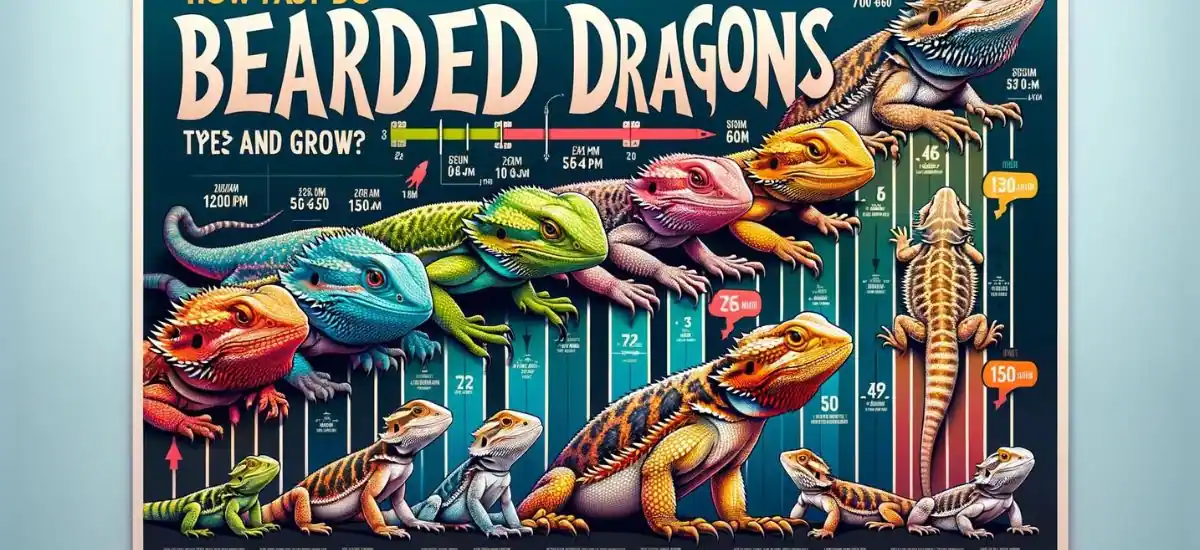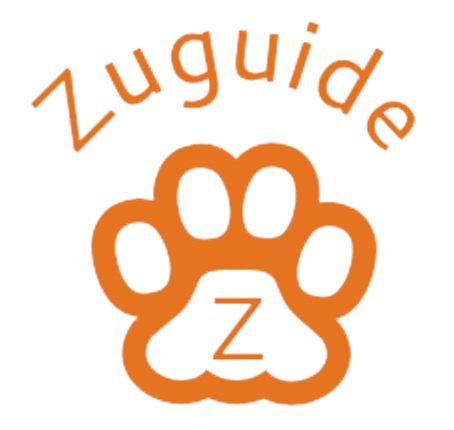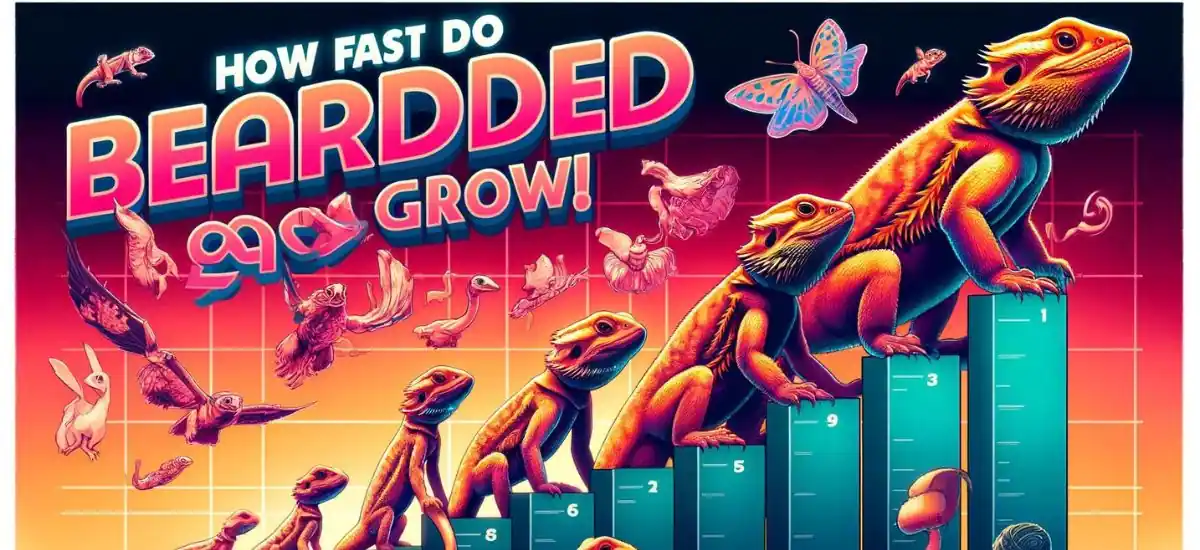The bearded dragon is a classification of the common eight reptiles known as pagodas. They came to be known as bearded dragons because of the present beard under their throat, which possesses a great quality like changing the color of the beards depending on the situation.
The situation in which the color of the beard changes may vary. It could be a result of stress and anxiety or being aware of an upcoming threat, or anything.
They hail from semi-arboreal species and can mainly be found in Australia. They can be seen around the bushes, branches, and on the rock basking in the glory of nature. They are a habitat that generally lives in desert areas.
They are adept at living in the arid and subtropical woodlands, shore areas, scrublands, savannas, and the great interior deserts. Their growth depends on the outer circumstances as well as their inhabiting capacities and the nourishment they receive.
This article will discuss the bearded dragon growth rate: How fast do bearded dragons grow? And many other issues related to their growth.
How Fast Do Bearded Dragons Grow? Types And Growth Rate

There are the right types of bearded dragons available, and their growth rate differs depending on the type of classification they fall under.
- Pogona barbata – Found in the Eastern region, hence the name eastern bearded dragon. They can grow up to 24in. But that can only be seen in the case of the males while the females grow up to 22in.
- Pogona Henry Lawson – Otherwise known as Rankin’s dragon, Black-soil bearded dragon, Dumpy dragon, Dwarf bearded dragon. It is smaller than Pogona Barbata, growing up to 12in. In a total length and a blunt nose.
- Pogona microlepidota- Otherwise known as Kimberley bearded dragon. They are the smallest of the lot, which grows up to 4-6 inches.
- Pogona minima – Otherwise known as Western bearded dragon. They are slightly smaller than the Pogona minor, growing up to 14 inches.
- Pogona minor – Otherwise known as a Western bearded dragon, Dwarf bearded dragon. They are 38cm long.
- Pogona mitchelli – Otherwise known as North-west bearded dragon. They grow up to 18 inches.
- Pogona Nullarbor – Otherwise known as Nullarbor, bearded dragons grow up to 15 inches.
- Pogona vitticeps – They are known as an inland bearded dragon or Central bearded dragon. They are the longest in the length of all the eight subspecies. They can grow up to 24 inches.
Know About: How Long Can Bearded Dragons Go Without Food?
The Growth of the Bearded Dragons depends on these things:
Many people have taken bearded dragons as their pets. The rate of Bearded dragon growth concerns many. Their growth rate depends mainly on the nutrition they are gaining and on the genetics of the species. As we mentioned, pogona vitticeps is considered the longest one among the species. Their growth begins in the 4th week after they have come out of the egg.
Now, their maximum length will be around 5cm, and from there, they make their journey until their growth is arrested. It is on the 6th week of their birth; their growth rate is in a rapid mode. The environment is also a big contributing factor to the growth of the bearded dragon. They are used to living in an arid environment.
Now, their maximum length will be around 5cm, and from there, they make their journey until their growth is arrested. It is on the 6th week of their birth; their growth rate is in a rapid mode. The environment is also a big contributing factor to the growth of the bearded dragon. They are used to living in an arid environment.
If a child is put in a cage before their growth has at least the middle stage, they will be arrested. The bearded dragon, which goes into the trance of malnutrition, won’t grow to its full health. The male and the female habitats are genetically different when it comes to the growth rate. Males are larger in size and length too than the female ones.
How long does It take a Bearded Dragon to Grow?

When you buy a bearded dragon that is almost grown-up, you have to decide their age and sex. If you have gotten a small bearded dragon, then this is the chart you have to follow.
- 3-4 in should be the growth during their 0-1 months of age.
- 5-9 in would be the growth during their 2 months of age.
- 8-11 in should be the length during their 3 months of age.
- 9-12 in should be the length during their 4 months of age.
- 11-16 in. Should be the length during their 5 months of age.
- 11-18 in. Should be the length during their 6 months of age.
- 13-20 in. Should be the recorded length during their 8 months of age.
16-22 in. Should eve the recorded length during their 12 months of age. This is the recorded chart against which you can measure up your bearded dragon. After one year, the growth of the bearded dragon will be arrested, and you will get a Fully grown bearded dragon.
Frequently Asked Questions
- What temperatures are ideal for keeping a bearded dragon healthy?
Bearded dragons thrive in environments where the daytime temperatures range from 75-85°F (24-29°C) with basking areas reaching 95-110°F (35-43°C). Nighttime temperatures should not drop below 65°F (18°C).
2. How often should bearded dragons be fed?
Young bearded dragons should be fed three times a day, while adults do well with one meal per day. The diet should consist of a balance of insects and greens, adjusted for the age and health of the dragon.
3. Can bearded dragons recognize their owners?
Bearded dragons can recognize and respond to their owners over time, showing familiarity through more relaxed behaviors and a willingness to be handled.
4. What are common health issues to watch for in bearded dragons?
Common health issues include metabolic bone disease due to calcium deficiency, respiratory infections, and impaction from ingesting substrate. Regular veterinary check-ups and a well-maintained habitat can help prevent these issues.


Leave a Reply
You must be logged in to post a comment.